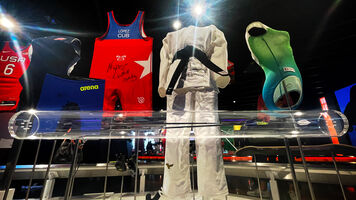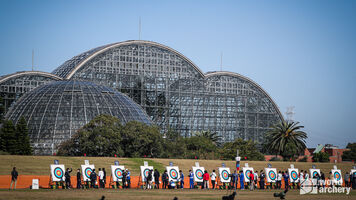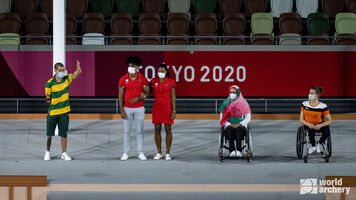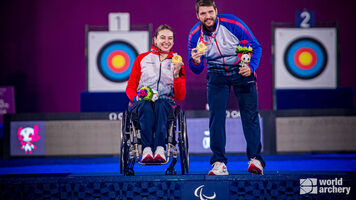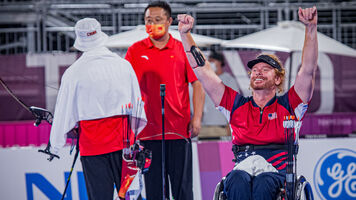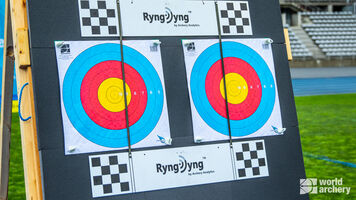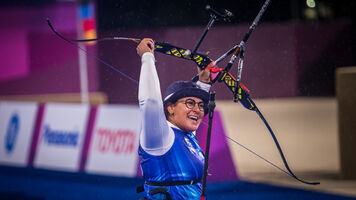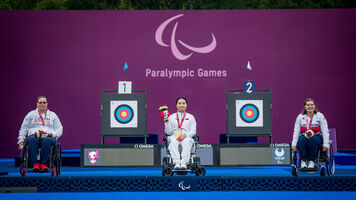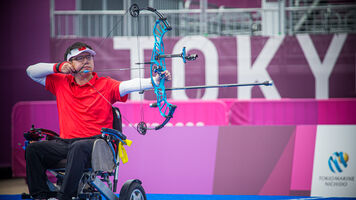Olympics in Tokyo could be hottest on record

Temperatures during the Tokyo 2020 Olympic Games are projected to reach cautionary levels when the cauldron is lit on 23 July.
Meteorologists have forecasted high temperatures across Japan and rainfall during the entire Olympics. If those predictions are correct, heat and humidity will be an added concern for athletes, especially if the COVID-19 pandemic results in a shorter acclimation period than in previous Games.
“We’re expecting temperatures above average between June and August,” said Motoaki Takekawa, a forecaster at the Japan Meteorological Agency.
The country has experienced record-breaking heat waves in recent years, while Tokyo’s mean temperature has climbed by 2.86 degrees Celsius since 1900 – more than three times as fast as the world’s average.
The best chances for rain, meanwhile, are in the first few days of the Games. This is particularly notable for the archery events, which holds its qualification round on the day of the opening ceremony.
Some of the 128 archers contending for medals in Japan were also in attendance at the test event for Tokyo 2020 held in July 2019.
Rain made an appearance then as well, giving the athletes a taste of what to expect at Yumenoshima Park, while familiarising themselves with other aspects of the facilities.
“I think I have gained a lot of experience in this test event in preparation for the Olympics in Tokyo next year,” Korea’s Kim Woojin said at the time.
“There will be many things changed here but the environmental factors will not change. That is why I am here to practise, and if I am able to take part next year, this experience will not be wasted. It will be a big help.”
Most of the archers in 2019 fixated on learning the wind patterns at Yumenoshima Park, a green space that hosts a cluster of sports facilities.
“I think it’s going to be pretty protected but I think it’s going to be hard to read the wind,” USA archer Brady Ellison said. “All week it’s been a headwind. With the big back wall behind the targets, you don’t see it on the flags on the targets until it comes from the side and is a true sidewind.”

“So we’re going to have to rely a lot on feeling and then the flags on each side of the field. Overall, I think we’re going to be able to shoot some big scores on here.”
The shooting stage at the Games is expected to be about twice the size as that at the test event. Protected by flanking stands and a multitude of buildings outlined out on the ground in white this week, the dynamics of the wind flow are bound to change.
So, too, will the temperatures. The Olympics will place a few weeks later in the year, when the full heat of the Japanese summer is expected to have arrived.
Had the Games been played in 2020, it would have benefited from a dramatic reduction in average temperatures than in 2019. Last year's summer was much easier on Japan, as temperatures hovered around the 27 to 29 Celsius range, with regular morning showers sprinkled in.
Thanks to the pandemic, the athletes missed out on what would have been a lucky break in terms of weather and will have to prepare for the hottest Olympics ever.
“We’re used to it,” India’s Deepika Kumari said. “I think it’s important to drink a lot of water, have some energy drinks with you and just do the same as if you were training at home. It doesn’t feel different at all.”





